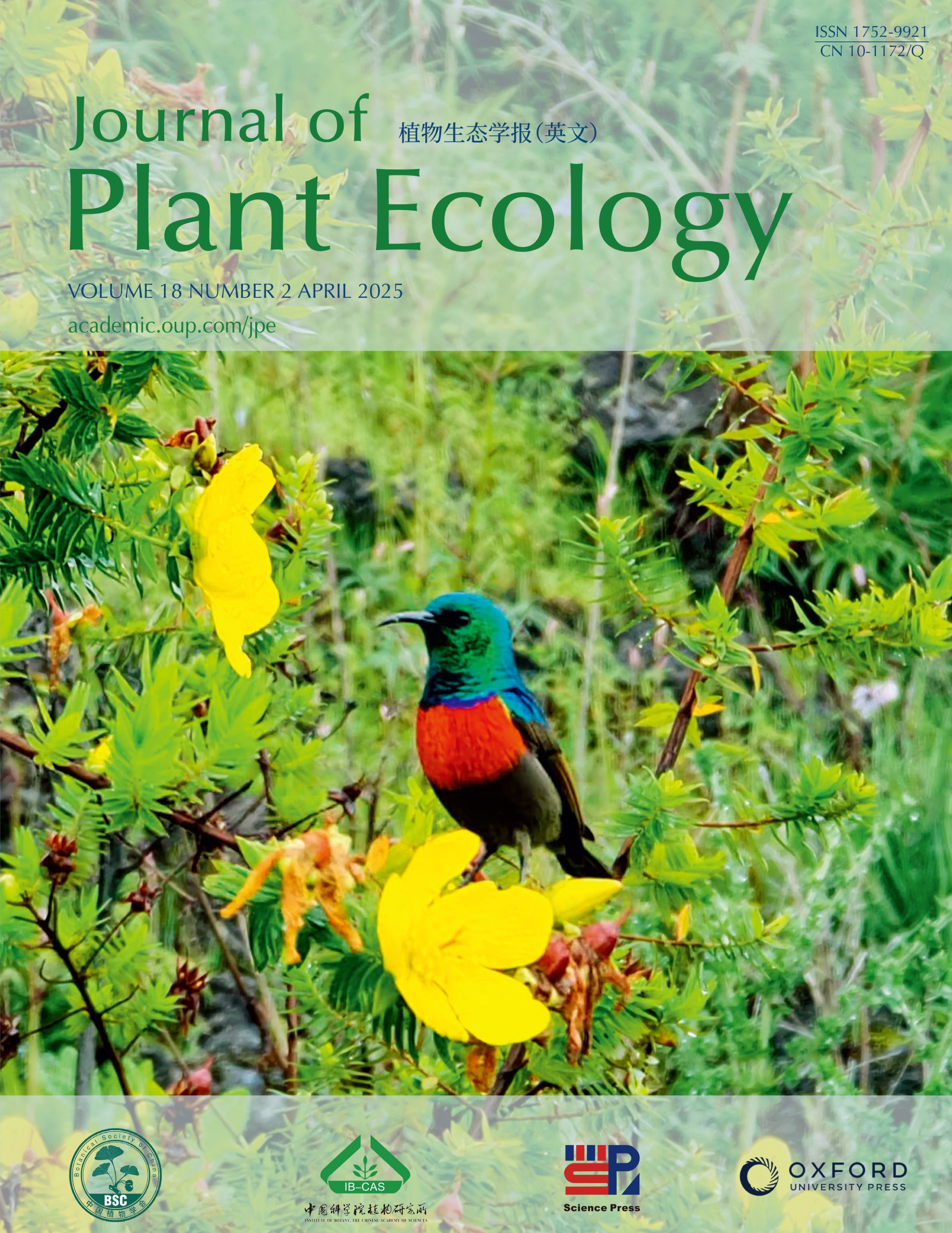Current Issue
-
 Volume 18 Issue 2
Volume 18 Issue 2
A male Northern double-collared sunbird (Cinnyris reichenowi) visiting Hypericum revolutum (Hypericaceae) in the grasslands of Mount Cameroon. Hypericum revolutum is the most important nectar source for pollinators at high elevations of Mount Cameroon. Photo credit: Štepán Janecek.
IF: 3.9
CiteScore: 5.7
CiteScore: 5.7
Editors-in-Chief
Yuanhe Yang
Bernhard Schmid
Yuanhe Yang
Bernhard Schmid
CN 10-1172/Q
ISSN 1752-9921(print)
ISSN 1752-993X(online)
ISSN 1752-9921(print)
ISSN 1752-993X(online)







